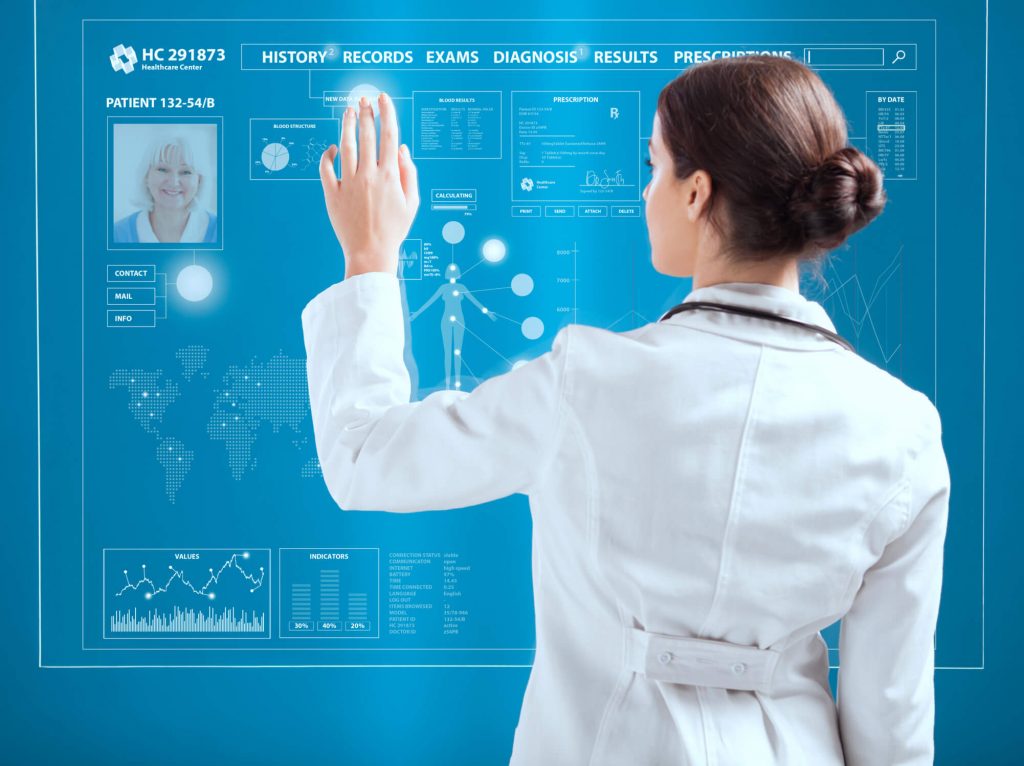Technology innovations have led to significant changes in healthcare in the 21st century. While much of this impact revolves around the use of electronic healthcare records (EHR), other technologies have also emerged that are making healthcare more efficient and improving patient safety and health outcomes.
These innovations include telehealth and telemedicine, wearable medical devices and interoperable systems. Putting this new tech to work requires a strong relationship between health clinicians and health IT experts who ensure the technology is utilized to best support medical staff and patient safety.
How Does Information Technology Affect Patient Safety and Care?
The impact of health information technology on patient safety and care is as varied as the systems and devices now in use.
However, much of it starts with the adoption of EHR by medical facilities in the last decade. These records provide a central repository of a patient’s medical history, allowing for the sharing of clinical information, including physician notes, test results, and information on prescription drugs.
EHR’s take into account the impact of human factors in healthcare, improving communication and providing “one source of truth” on patient health and treatment for better coordination of the patient care process.
The impact of information technology has expanded beyond information visibility and sharing to utilizing information for data-informed patient care. Advanced data analytics increasingly plays a crucial role in improving patient safety. The coronavirus pandemic has underscored the importance of health data, with analytics programs able to create COVID-19 patient risk profiles that better identified those most at risk of lethal outcomes in the early days of the pandemic.
With the variety of technology available, a structured approach is needed in how healthcare leaders and health IT professionals implement the technology that works best in their specific situation. This works best when understanding three key dimensions of technology in healthcare, according to the Institute for Healthcare Improvement.
1. Understanding Needs
Administrators, clinical leaders and IT leaders must come together to identify areas where technology will benefit their specific operation, then set goals for what they want to achieve with that technology.
2. Asking the Right Questions
Both health IT professionals and clinicians must consider every potential tech solution through the lens of how it will impact the work of clinicians, lead to improved patient care and safety, and ultimately, positive health outcomes.
3. Bringing Health IT and Health Clinicians Together
Asking the right questions is dependent on health clinicians and health IT coming together for greater coordination between the work each group does. That’s the best way to get on the same page about how to approach integrating technology. For example, having IT personnel attend clinical meetings could provide greater insight into medical operations.
Information Technology with The Greatest Impact on Patient Safety
While every medical operation has different needs, the following areas are where health IT has made the biggest impact on patient safety, so far.
Easier Access to Information
Interoperability, the ability to share patient information over different systems, is something health IT professionals have worked on for years. As digital systems improve in this area, it allows clinicians to share patient information, lowering the risk of errors in treating a patient. A doctor at a hospital, for example, can get access to a patient’s records with their personal physician. As the COVID-19 emergency has demonstrated, it can also prove beneficial in alerting healthcare providers at the initial outbreak of a pandemic.
Adoption of Digital Medical Records
Electronic medical records and electronic health records have had an enormous impact on the work duties of nurses and other personnel. Nurses must now understand how to input patient information into the system. Medical coders keep the records updated with the proper codes. The billing department also uses these records to submit insurance claims. Overall, digital medical records result in better, more efficient care for patients.
Reduction of Drug-Related Errors
Mistakes in prescribing drugs is a medical error with potentially catastrophic consequences. Electronic prescribing has helped to mitigate risks in this area. These systems reduce the potential for medication errors by moving handwritten scripts to electronic entry on a secure device, automatically checking for drug interactions, automating re-fill requests and reminders, as well as raising alerts if a suspected error is made in the prescribing or administering of medication.
Improved Public Health
Public health involves creating preventive programs that help people stay healthy longer, as well as identifying chronic health issues within specific population demographics. In focusing on the overall population, public health informatics utilizes data from a variety of sources—including hospitals, social services, surveys and more—to help healthcare providers and government agencies address and prepare for new health threats.
For example, data in EHR is extremely valuable in applying analytics in population health management, allowing researchers to detect a problem early (such as flu outbreak) and act quicker (in the case of flu, getting more vaccines into the affected community).
Clinical Decision Support
Clinical Decision Support (CDS) is one of the most critical areas where technology can improve patient safety. CDS involves using technology to get all the relevant information about a patient, as well as codified standards about potential treatments, into a clinician’s hands in real-time.
According to the Agency For Healthcare Research and Quality (AHRQ), a review of CDS in oncology care found “increased clinical practice guideline use and concordance, improved care process measures, and reduced safety events.”
The Future of Information Technology and Patient Safety
Artificial intelligence (AI) and machine learning have far reaching potential and still un-tapped applications in many industries, and healthcare is no exception.
In that same report from AHRQ, it noted that AI can enhance and expand CDS. For example, AI systems currently under development can detect complex conditions such as sepsis or other warning signs of patient deterioration, according to the report.
AI and machine learning also can play a role in the business of healthcare. Advanced systems can handle many of the routine processes in billing and coding, freeing up humans to take on more complex jobs.
Another area to emerge in recent years is predictive health analytics. Advanced systems will eventually be able to prescribe the best course of a treatment for a patient and compare potential outcomes based on different options available for clinicians.
Advances in technology will continue to drive the future of healthcare. For those with a desire to be on the frontlines in applying technology towards improving patient safety and health outcomes, graduate certificate and degree programs in health informatics and healthcare analytics can provide the knowledge needed to lead in the field.
Take your next step with the online graduate programs in Health Informatics and Healthcare Analytics from USF Health!




